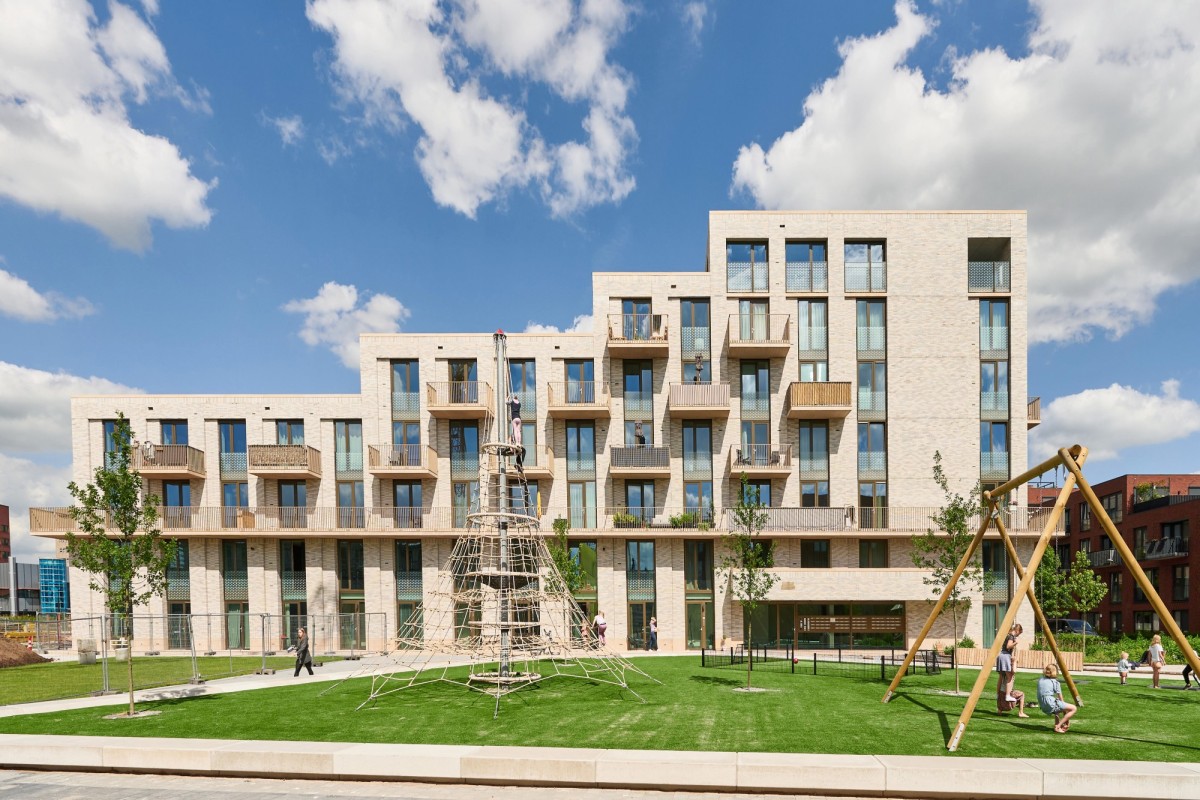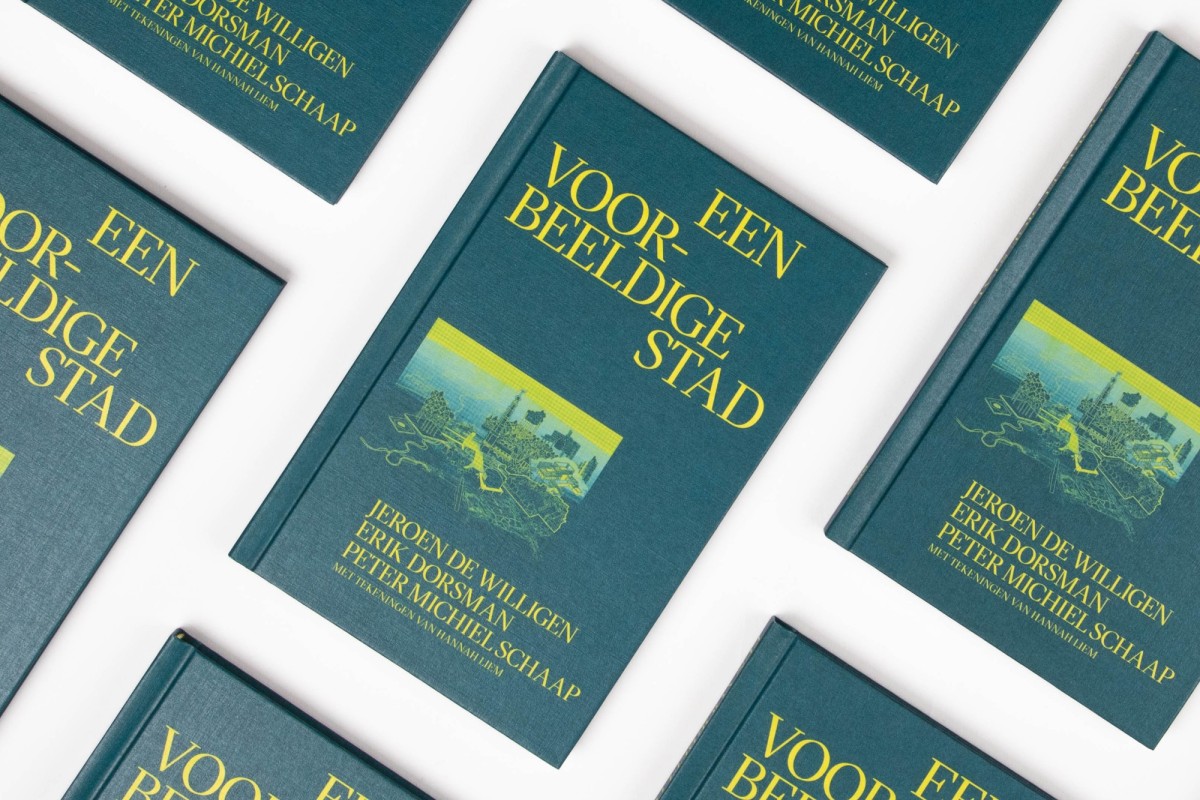The high life
- Intro
- Peter Vanden Abeele, city architect Gent
- Spreker
- Jeroen de Willigen – former city architect Groningen, Creative Director De Zwarte Hond (NL)
 Ronald Zijlstra
Ronald Zijlstra
The housing issue and the need to densify force us to seek other forms of housing. Can these new forms of housing – without loss of housing quality – be compact, tall and collective? We draw inspiration from a Dutch architectural practice that has an opinion on higher building: De Zwarte Hond. This firm is committed to creating spaces for encounter, to social cohesion, to quality of life, repairing and strengthening the urban fabric and to places that touch the heart. In addition, Jeroen de Willigen was city architect of Groningen from 2016 to 2020, where he helped develop a vision around the city’s housing policy.
Jeroen de Willigen
De Zwarte Hond is a design studio for architecture and urban planning. Based in Groningen, Rotterdam and Cologne, they design projects that are characterised by a surprising self-evidency. Groninger realism, Rotterdam optimism and German thoroughness are what they put into this. By combining architecture and urban planning in one office, they oversee the various forces at play.They estimate what adds value and enhances quality of life: for the resident, the street, the neighbourhood and for the city.

Together with Erik Dorsman and Peter Michiel Schaap, Jeroen de Willigen wrote the book ‘The exemplary city’, an ode to the city and the urban challenge, with Groningen as a case study. In 1928, H.P. Berlage and H.P.J. Schut drew a plan for Groningen based not on speed, limiting disturbance and curve radii, but on coherence, continuity and proximity. Nearly a century later, this plan still fascinates. It turns out to be an excellent and, above all, inspiring basis for the great questions of today and tomorrow: from the substantial housing challenge and the desire to keep the city compact to the immense climate and energy issues. The book is a call to embrace the basic principles of urban planning again. To put public space back at the center of urban design. To look beyond the exchange value. But above all, to work on the city with love and attention to context. This is how we keep the city exemplary.
 Jeroen de Willigen is partner | creative director at De Zwarte Hond. Educated at Delft University of Technology and graduated as MCD (Master City Developer) from Erasmus University Rotterdam in 2015, he won the MCD thesis prize in 2015 with his thesis “The Value of Structure.
Jeroen de Willigen is partner | creative director at De Zwarte Hond. Educated at Delft University of Technology and graduated as MCD (Master City Developer) from Erasmus University Rotterdam in 2015, he won the MCD thesis prize in 2015 with his thesis “The Value of Structure.
From 1996 to 1998, De Willigen worked at West 8, next he founded the urban planning department at De Zwarte Hond. In 2001, he became a partner there and, as of 2011, director. Within De Zwarte Hond, De Willigen is responsible for numerous urban planning projects such as: De Blauwe Stad in Oldambt, Groeseind and the Zeehelden and Uitvindersbuurt in Tilburg, De Florijnas and the Stationsgebied in Assen, De Grunobuurt in Groningen and Hart van de Waalsprong in Nijmegen. He also acts as supervisor in various area developments. In doing so, he uses his design skills to work on social and economic issues.
Between 2008 and 2012, De Willigen was coordinator of urban planning at the Academy of Architecture in Rotterdam and a lecturer in Groningen and Delft. From 2016 to 2020, Jeroen was city architect in Groningen.
Peter Vanden Abeele
The housing issue and the need to densify force us to look differently at housing forms. Because the housing ideal of the detached house is spatially and socially unfeasible and unaffordable for a large proportion of families. If we want to make housing affordable, sustainable and adapted to specific housing needs, we must also live differently ourselves. This requires examples that show that this tendency to live differently can also be achieved without loss. That more urban living has a host of qualities and advantages. And that this requires us to design new forms of housing with quality. These housing forms will, for example, be compact, high, and collective.
Compact
On average, we still live on a large footprint, especially in the growing city or 20th century belt. More compact building with smart linking of spaces and qualitative floor plans should make it possible to live more cheaply and sustainably with less impact on space. The compact urban housing typology and the high density associated with it has clear advantages. It allows more households to live in the city and have access to urban amenities.
Collective
We see more and more advantages in sharing facilities rather than owning them, and the same can be done for housing and housing services. This can increase affordability, but more importantly, the quality of living. What residents can and want to make collectively depends very much on the target group of the housing project. It will be different for students, than for families or the elderly. But it can always offer extra quality and requires new design proposals.
High
We are still too scared of high-rise housing. This too can increase affordability and offer urban living qualities. Building higher is a means of offering more housing in specific places with many qualities where additional densification makes sense, such as station environments or at the edge of parks. And higher housing also has assets such as views, sunlight, privacy and tranquillity. To guarantee the qualities of high-rise building, however, we must always link it on the neighbourhood scale with low-rise building open space. The contact with ground level also requires extra attention because these houses are also part of the neighborhood. The new Ghent Spatial Structure Vision 2030 ‘Space for Ghent’ provides the framework.”
From ‘Stadsessay Breed Wonen’ – Inspiration Note Housing City of Ghent

Peter Vanden Abeele (°1979) is an architect, urban designer and renowned spatial planner. At the end of 2017, he was appointed as the first City Architect of Ghent. Previously, he worked as a scientific researcher within the field of regional and urban development. He was project manager for urban development projects in Antwerp and worked for four years as urban planning consultant for the City Architect of Antwerp. He also worked as a freelance urban designer and co-founded a design agency. Since 2005 he has taught in the field of urban design at Ghent University, with in between assignments for Sint-Lucas Hogeschool voor Architectuur and the Academie voor Architectuur en Stedenbouw Tilburg. As an expert, he is a member of several urban advisory bodies, has created several exhibitions and writes regularly on architecture and urbanism. Peter was born and raised in Ghent.
SkYline. Highrise in the Low Countries
 Hans Wilschut
Hans Wilschut
This lecture is in collaboration with the STAM and the *Ghent City Architect * as part of the expo SkYline. Highrise in the Low Countries.
You recognize people by their silhouette, cities by their skyline. In the expo ‘SkYline. High-rise buildings in the Low Countries’, STAM (Stadsmuseum Gent) challenges our – often casual – view of the city. What is behind the erratic lines of stone, steel and glass? And why do we keep building high, higher, highest? SkYline’ is an invitation to stand still and experience. Both inside and outside the expo. During lectures and a bicycle tour, among other things, you can delve deeper into the theme of high-rise. Do, Understand and Watch The SkYline: discover the full programme at stamgent.be. ‘SkYline’ runs until May 21, 2023.




